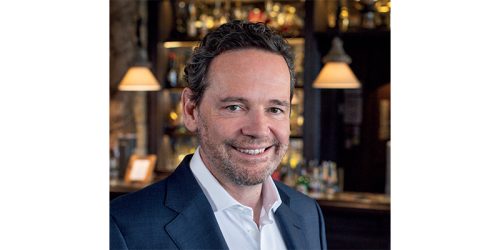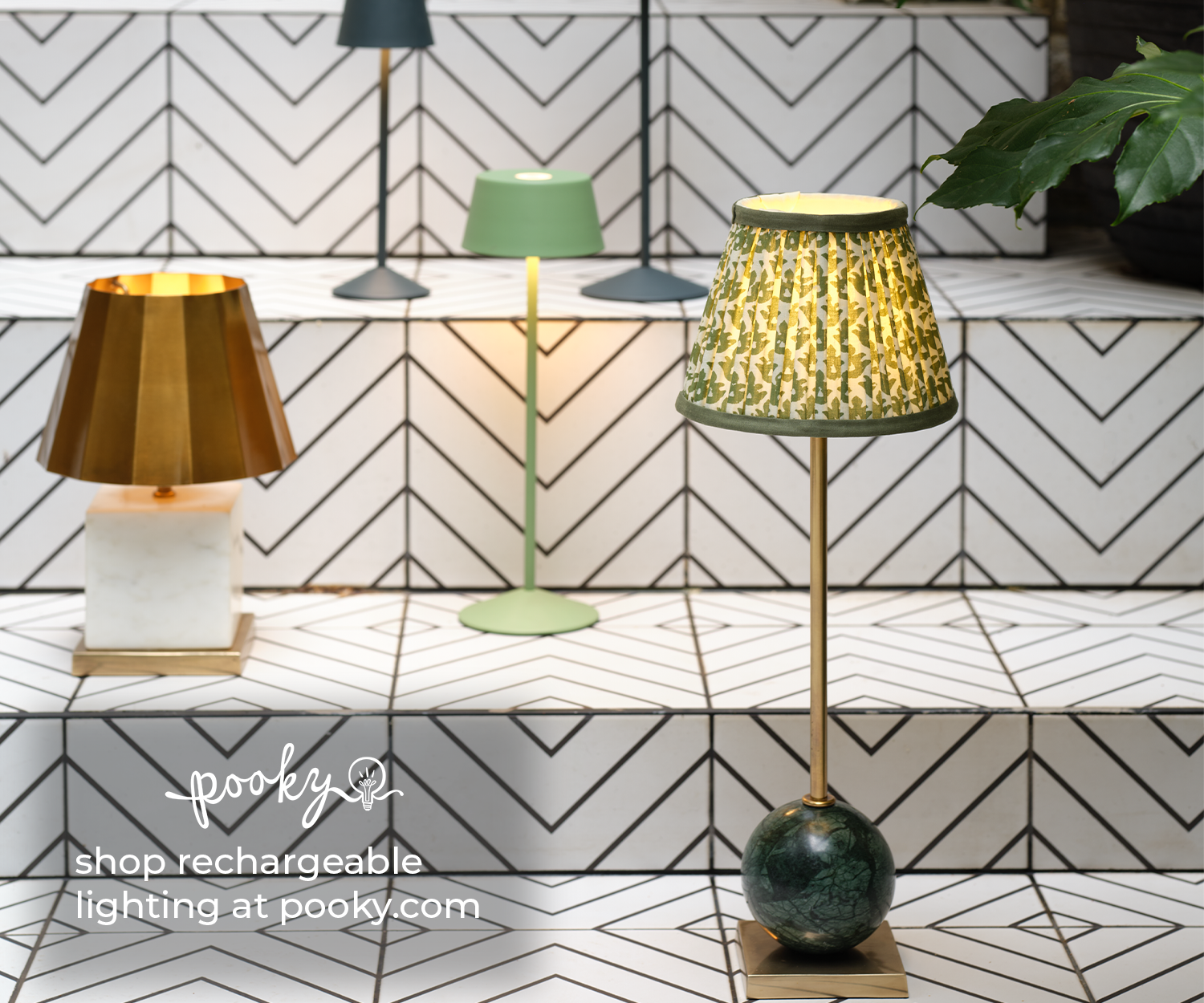Franky Rousell, Founder and CEO, Jolie Studio
Design that feels as good as it looks – Franky Rousell leads with the senses.
Franky Rousell designs in a world where neuroscientists, colour psychologists, and gastro-technicians are as essential as fabrics, furniture, and finishes. Their shared knowledge provides the scientific foundation for her design philosophy – one that sits at the heart of her pitches and wins her the work. But it’s a far cry from when she launched her studio, Jolie, just under a decade ago. “There was a time when people’s idea of wellness was green walls and sit-stand desks, and our pitches were met with a lot of confused faces,” she recalls. But much has changed since then – and Rousell’s determination and distinctive approach to design are now in high demand.
After completing a degree in Architectural Technology and Design, Rousell thought long and hard about where she wanted to call home. Born and bred near the Cotswolds, she had studied in Bristol and wasn’t quite ready to embrace the capital. Looking for somewhere that offered the same creative vibe as Bristol, she settled on Manchester, where instead of joining a design firm, she approached property developers Bruntwood.
“It was 2012 – the UK was still in recession, and none of the architecture practices were hiring. Looking at the financial climate, I followed my instinct and thought maybe I could build an in-house design team for them [Bruntwood] and save the company the cost of hiring external architects.”
Her instinct proved right, and within a year, she was heading up the design team.
“It was quite mad – they had a portfolio of about 400 buildings, and I, along with just one other, was the team,” she laughs. “Absolutely everything was landing on my desk – whether it was an office fit-out or a reception redesign. It was one of the hardest jobs I’ve ever done, because I couldn’t just be creative – I had to constantly consider the full picture. As a young woman, I was catapulted into the male-dominated world of construction. I wasn’t surrounded by gorgeous women into interior design,” she tells me. “I was surrounded by guys in suits, pulling pennies together to make ends meet for the business. After three years, I felt I had all the tools to start my own business. I had the contacts; I was well integrated in the city – and that really was the starting point for Jolie.”
The suited-and-steel-cap-booted world of construction seems an unlikely starting point for a brand that’s built around sensory design. Imagining it to be a natural reaction to the years she’s just described, she instead shares a far more moving story.
“When I was doing my GCSEs, my mum suffered a huge stroke overnight and was hospitalised for about two years. To this day, I remember sitting at her bedside, looking around the room and thinking nothing around her is making her feel any better. The noises, the smells – everything was so anxiety-inducing, and that was when I really started to think about it.
Later, when I did my degree, I wrote a dissertation on designing an architectural structure for a stroke rehabilitation centre. I got a first for that project, which was amazing – I think because it really came from the heart.”
Her path into sensory design is a powerful reminder that adversity often shapes the most creative ideas. Armed with a clear vision of what Jolie would be, she began laying the foundations by embarking on an impressive body of research – starting with a trip to Paris to meet with an aromatherapist.
“After that meeting, I started contacting authors of books on touch neuroscience – and ended up meeting people across all the realms of the five senses,” she explains. “That led me to Professor Francis McGlone, a touch neuroscientist based at Liverpool University. He was so interested in what I was trying to achieve, he opened his network of neuroscientists working across the senses. They are mostly centred around Cambridge and Oxford, and though many had branched out, consulting for pharmaceutical and skincare companies, they had never spoken to an interior designer – and again, were genuinely interested.”
Her research continued to expand, and soon she was collaborating with colour psychologists, gastro physicians, perfumers, and even composers – adding to an ever-growing network of specialists. “I was looking at absolutely everything,” she adds.
But with so much knowledge-gathering, there’s always a risk of stalling the purpose it’s meant to serve. I’m curious how she kept this from happening as Jolie took shape.
“Well, I remained focused on the company throughout, and in our first year, we did manage to land projects. There weren’t many, but certain people understood what I was trying to achieve and took a gamble on us. But it was hard sitting in front of developers – who were mainly our target at that point – and trying to get them to understand what on earth I was talking about. ‘Who are these neuroscientists, and why does it matter?’ It was an interesting dynamic – even for us. Just trying to write our website was a challenge – what were we doing, and how could we quantify it without making it sound like we were just there to design yoga cafés?” she smiles.
Jolie’s first major project was Deansgate Square – Manchester’s high-profile residential-led development – that quite literally changed the city’s skyline. Coming through a chance meeting in a bar, before she knew it, Rousell was sitting before the development team, presenting a somewhat limited portfolio. “All we had to show them were some little hotel bedrooms that we had designed as a favour for somebody down the road – and explain the concept that we were trying to do. Suddenly they just pulled out these masterplans of these four huge skyscrapers and said, ‘Would you be up for having a go at this?’”
This turned out to include the entire Wellness Centre and club amenities – a spa, yoga studio, swimming pool, and courts – along with all the residents’ areas, including tea rooms and lounges. It was a major win in the design sphere and a chance to put the sensory ethos into practice on a large scale.
Hailed a success by both developers and residents, the sceptics and confused were now beginning to sit up and take notice. Coupled with a comprehensive portfolio of high-end work on a landmark project, the interest soon translated into viable commissions.
With so many elements to consider beyond the fundamentals, I ask Rousell to explain in more detail how the sensory aspects are worked into a scheme. As clear in communication as she is in concept, she starts at the beginning.
“There are three key layers to our design process. The first two are quite conventional in terms of how interior designers think. First, we consider the aesthetic: what the brand is and how to infuse a sense of that brand narrative into how a space looks. Then it’s about understanding who the target customer will be. We become quite obsessed with that, especially when working on hotel schemes. We do a lot of deep research into who that is – not just what they’re eating, wearing, drinking, and where they’re hanging out, but what their political leanings are, and what issues are frustrating them at that time. From there, we make sure everything we’re doing is geared towards them.”
As she points out, so far this is a familiar approach. But then she explains the third – sensory – element: the cause of all those confused faces.
“So, once we have considered the design in the conventional way I’ve just outlined, we then take it beyond a practical perspective and approach it from an experiential viewpoint. In our first site meeting, we do something called sensory zoning – which is a powerful way for us to understand our client’s mindset: how they want their space and brand to be perceived, and how they want their customer to feel.
We lay out a big floor plan, take a marker pen – and we tell them to imagine walking in the front door. We then ask them what they want that first impression to be; what they want the guest to feel. We ask them to use emotionally led words – relaxed, excited, or perhaps confident. We then extract the key emotions that are being expressed, before moving on to the next space and repeating the exercise until all areas are ‘zoned’.
Back at the studio, we look at the science behind the feelings we want to evoke, and how we can layer all these elements on top of each other. That then guides us when we are choosing colours, deciding on textures and materiality. Then we think about fragrances and soundtracks… everything.
It’s powerful to have that big mind map right at the beginning of the project. It’s funny, but to this day, I still don’t believe interior designers really understand the power of the sensory aspect.”
Jolie Studio was still very much in its infancy when COVID struck, but unlike much of the industry, Rousell’s phone started to ring. “It was fascinating. I had spent so many years talking to anyone who would listen about the concept, and the importance of how we feel in a space. Then COVID hit, and overnight, we were all shut up in our homes. Suddenly, I was taking calls from those same developers, all telling me they finally understood what I had been trying to explain to them two years previously. Employers were needing to get staff back into the workspace and needed to offer spaces that they felt good in,” she tells me.
As the work started to roll in, another unexpected development emerged. Rousell began receiving calls from firms interested in acquiring her business. Though she had no intention of selling, she took the meetings out of curiosity – and was struck by the validation that what she’d created held real value. Her response? “I hired two new designers, had a rebrand, and thought I’d throw myself into new business development – and lo and behold, here we are today!” she grins – arms outstretched.
Today, Jolie Studio has two offices – in London and Manchester – with a third about to open in New York. With 13 projects in progress across the UK and US, and many more in the pipeline, Rousell is understandably upbeat.
“We’re in the thick of it at the moment, and it’s very exciting,” she says. “I always said we would work across every sector – and for a while, I followed wherever the market took us. But about two years ago, I realised I wanted to focus on hospitality, and I brought in Creative Director Sarah Wakefield for exactly that reason – because of her background at Soho House. I was clear: I wanted Jolie to be known for hospitality design – beautiful hotels, members’ clubs, bars and restaurants.”
That clarity is paying off. In the past year, Jolie Studio has gone from designing Hyll Hotel – a boutique retreat in the Cotswolds with just eight guest rooms – to a 300-room hotel in Covent Garden (which she can’t yet discuss), and most recently, a collection of 51 lakeside lodges at The Reserve, Chester Zoo.
What began as a deeply personal approach to design is now reshaping spaces on an international scale. In just under a decade, Jolie Studio has grown from a one-woman vision into a multi-city force working with major hospitality brands. The science is solid, the design is distinctive – and the industry is finally catching up.
“We’re on an exciting ride that’s going very fast,” Rousell grins, “and we’re just going with it.”














